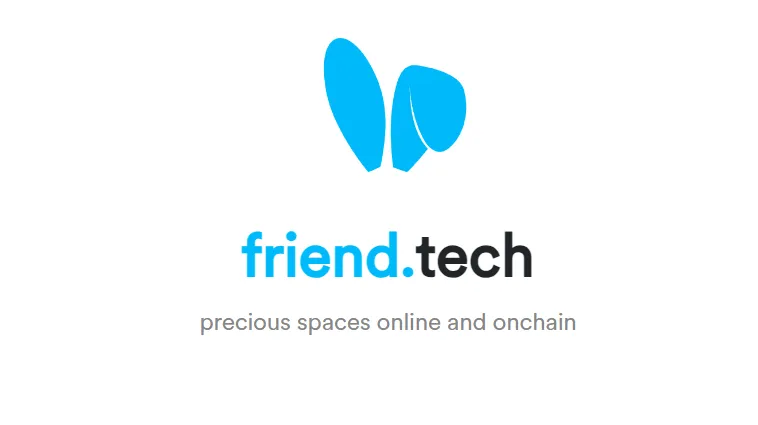Lessons from the Rise and Fall of Friend.tech
From skyrocketing success to near collapse, the story of Friend.tech offers valuable lessons for those looking to understand the risks and rewards of social influence monetization.
Once a promising experiment that generated millions in profits for its creators, Friend.tech now stands as a cautionary tale for investors and users alike. Here’s a breakdown of what went wrong and what we can learn from this failure.
The Birth of Friend.tech
Imagine being able to invest in your favorite influencer the same way you buy stocks. That was the disruptive vision of Friend.tech, a decentralized social media application launched in August 2023 on the Base blockchain. It quickly captured the imagination of the crypto community, reshaping the concept of social influence.
Friend.tech’s origin story is nothing short of a Silicon Valley startup dream. The masterminds behind it—0xracerAlt and Shrimppepe—were both well-known in crypto and social media circles.
Racer, for instance, was involved in TweetDAO, a project that transformed a Twitter account into a decentralized autonomous organization (DAO), while Shrimppepe had worked on Stealcam, a project gamifying NFTs. Their backgrounds in these unconventional ventures set the stage for Friend.tech’s bold, rebellious spirit.
Monetizing Social Influence

At its core, Friend.tech’s brilliance lay in its novel idea of turning social influence into tradable assets known as “Keys.” Users could not only follow their favorite creators but also “buy” a portion of their influence. These Keys granted access to private chat rooms and exclusive content, effectively creating a new form of social currency.
The pricing model was also innovative, following a “bonding curve” mechanism, meaning the more users bought a particular creator’s Key, the higher its price would rise. This dynamic created a stock market-like environment where social interactions, investments, and gamification blended together in a new kind of “attention economy.”
Key Events in Friend.tech’s Rise
- August 10, 2023: Friend.tech launched on the Base chain, attracting 136,000 daily active users on its first day.
- August 15, 2023: The platform announced rewards for app testers, fueling even more growth.
- August 19, 2023: Friend.tech raised a seed round of funding, with notable investment from Paradigm.
- August 30, 2023: Platform metrics showed a next-day retention rate of over 75% and weekly retention exceeding 50%.
- September 14, 2023: Friend.tech’s protocol fees exceeded 5,000 ETH, with a total of 4,597,737 transactions.
- November 26, 2023: Co-founder Racer’s Twitter account mysteriously disappeared.
- May 3, 2024: Friend.tech released its FRIEND token for claiming via airdrop.
- May 4, 2024: Friend.tech officially released its V2 version.
- June 11, 2024: Friend.tech’s multisig address transferred 2,809 ETH to Coinbase.
- June 20, 2024: Friend.tech announced plans to launch Friend Chain but later deleted the tweet.
- July 9, 2024: The platform recorded its lowest daily active user count.
- September 8, 2024: Friend.tech officially shut down after locking its smart contracts, signaling the end of the project.
Why Did Friend.tech Go Viral?
A few key factors contributed to its meteoric rise:
- Innovative Monetization Model
Friend.tech’s token system was the heart of its success. By allowing users to purchase and trade Keys, which granted exclusive access to influencers, it created a sense of scarcity and value. Early investors could profit as demand—and the price of Keys—increased with the influencer’s popularity. - Capitalizing on Social Media Influence
Friend.tech strategically recruited influencers, especially in crypto and esports, giving them a strong financial incentive to promote the platform. These influencers brought their followers into the ecosystem, driving both user adoption and credibility. - Boost from Base Network
As one of the first applications on the Base blockchain, Friend.tech benefited from Base’s association with Coinbase and its early user base, helping it gain immediate traction.
The Causes of Its Downfall
Despite a strong start, Friend.tech’s rapid decline was driven by several factors:
- Economic Model Backfired
The same tokenomics that fueled its rise led to its fall. Keys, which functioned like low-market-cap tokens, attracted speculators who bought them early, driving up prices. When actual fans of influencers joined, they found themselves paying inflated prices, only to see prices collapse when early investors cashed out. This unsustainable model created barriers for new users, stifling growth. Additionally, many influencers had little incentive to maintain their private communities, leading to disengagement and further user attrition. - Excessive Profit by the Team
The project team made enormous profits early on, with protocol fees exceeding 5,000 ETH just a month after launch, eventually earning upwards of $50 million. Such early financial success often dampens the motivation to continue innovating or improving the platform. By November 2023, co-founder Racer had disappeared from social media, signaling waning interest in the project. - Lack of Long-term Vision
Friend.tech was a bold experiment, but its creators failed to sustain it. With no clear path for long-term engagement or a stable user base, the platform’s initial momentum quickly fizzled out. The announcement in September 2024 that the project’s contracts were locked and effectively abandoned was the final nail in the coffin.
Key Takeaways from Friend.tech’s Failure
Friend.tech was an ambitious attempt at creating a decentralized social media platform that redefined how we view and monetize social influence. Its rapid rise and equally fast decline offer several important lessons:
- Balance Between Innovation and Sustainability: While creative tokenomics can generate early excitement, they must be designed to promote long-term growth and user retention. Excessive speculative behavior often leads to unsustainable bubbles.
- Incentives for Ongoing Engagement: Platforms must provide continued value to both influencers and users to avoid rapid churn. Creators need reasons to engage with their audience beyond short-term financial gain.
- Team Commitment is Crucial: Early financial success can lead to complacency. Teams need to stay committed to improving the platform and engaging with users to ensure long-term viability.
Ultimately, Friend.tech’s rise and fall serve as a critical case study for the future of decentralized social platforms. It underscores the importance of balancing innovation with sustainable economics, user experience, and long-term commitment.